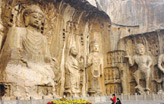Hot Issues
Fees to unsnarl traffic on roads in Shenzhen
Updated: 2011-03-08 08:50
By Zheng Caixiong (China Daily)
SHENZHEN - The country's first special economic zone in Guangdong province is studying the possibility of collecting congestion fees and further raising parking fees in the following months to help decongest its clogged roads.
Huang Min, director of the Shenzhen Traffic and Transport Commission, said the city is working on a package of measures to unsnarl its traffic jams, including further improving the management of vehicles and roads.
Wang Guowen, a researcher from the Shenzhen Comprehensive Development Institute, said the collection of congestion fees indicates the government is introducing market principles to tackle the city's traffic problems.
"Many overseas nations and regions, including Hong Kong, have introduced such market methods to help reduce the number of vehicles operating on their roads," Wang said.
"But how to collect the congestion fees? Relevant departments should hold a hearing to seek opinions from the public," Wang added.
Lu Huapu, a professor from Tsinghua University, said collecting congestion fees would certainly help ease traffic jams in Shenzhen, but it cannot tackle the problem at its roots.
"Relevant departments should further improve the city's public transport systems and lower the charges for using public facilities before congestion fees are collected," said Lu, a traffic planning expert.
Local taxi driver Liu Cheng-wen said he hoped the new measures would help ease the city's traffic jams because the clogged roads have hurt his business.
"Almost all the streets are jammed during peak hours," he said.
Huang Min said Shenzhen is looking at building special traffic lanes for the city's high-occupancy vehicles in the near future to help tackle the gridlock.
Shenzhen is expected to become the first city to build special high-occupancy vehicle lanes in the Chinese mainland, Huang said.
"Shenzhen will build an additional 150 kilometers of special bus lanes this year, and another 100 km in 2012," Huang added.
By the end of 2013, Shenzhen will have special bus lanes reaching more than 400 km.
"And Shenzhen will put 3,000 new buses into service in the following five years," Huang said.
Shenzhen now has the mainland's highest vehicle density. More than 1.7 million vehicles had been registered in the city by the end of last year, approaching the official limit. But there are actually more than 1.9 million vehicles, in addition to cars from outside the city, Shenzhen traffic department figures showed.
Chen Hong contributed to this story.
Specials

Tea-ing up
More turning to Chinese tea for investment opportunities like vintage wine

A cut above
The ancient city of Luoyang is home to a treasure trove of cultural wonders.

Rise and shine
The Chinese solar energy industry is heating up following recent setbacks in the nuclear sector



